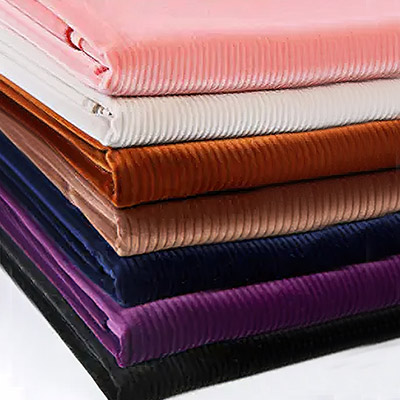Sun velvet fabric is often designed to be anti-mold due to several factors related to its composition, structure, and treatments. While it's important to note that no fabric is completely immune to mold growth, sun velvet fabric's inherent characteristics and certain manufacturing practices contribute to its anti-mold properties. The key principles that make sun velvet fabric anti-mold include:
1. Synthetic Fiber Composition:
- Sun velvet fabric is typically made from synthetic fibers like polyester or polypropylene. These synthetic fibers are hydrophobic, meaning they repel water and are less prone to absorbing moisture. Mold and mildew require moisture to thrive, so fabrics that do not readily absorb water are less likely to provide a conducive environment for their growth.
2. Tight Weave or Knit:
- Sun velvet fabric is often constructed with a tight weave or knit structure. This compact construction limits the amount of space available for moisture to penetrate and be retained within the fabric. With less moisture retention, the conditions necessary for mold and mildew growth are less favorable.
3. Water-Repellent Treatments:
- Many sun velvet fabrics undergo water-repellent treatments during the manufacturing process. These treatments create a barrier on the fabric's surface that prevents water from being absorbed. By repelling moisture, the fabric minimizes the chances of creating a damp environment that promotes mold and mildew development.
4. Moisture Wicking Properties:
- In addition to repelling moisture, some sun velvet fabrics are engineered with moisture-wicking properties. These fabrics are designed to pull moisture away from the surface and disperse it, preventing prolonged moisture accumulation and reducing the risk of mold growth.
5. Proper Ventilation and Airflow:
- Sun velvet fabric's plush appearance might lead to concerns about moisture retention. However, proper ventilation and airflow can be maintained due to the fabric's construction. Adequate ventilation helps prevent the buildup of stagnant moisture that mold and mildew require to proliferate.
6. Resistance to Organic Materials:
- Unlike natural fibers, synthetic fibers used in sun velvet fabric are less likely to provide a food source for mold and mildew. Microorganisms need organic materials to grow, and synthetic fibers do not provide the same nutritional content as natural fibers.
While these principles contribute to the anti-mold properties of sun velvet fabric, it's important to note that no fabric is entirely mold-proof. The effectiveness of the anti-mold characteristics can vary based on factors like the specific fabric composition, manufacturing processes, and maintenance practices. Regular cleaning, proper storage, and minimizing exposure to prolonged dampness remain important steps to preserve the fabric's anti-mold qualities and overall longevity.




 English
English русский
русский Español
Español عربى
عربى







